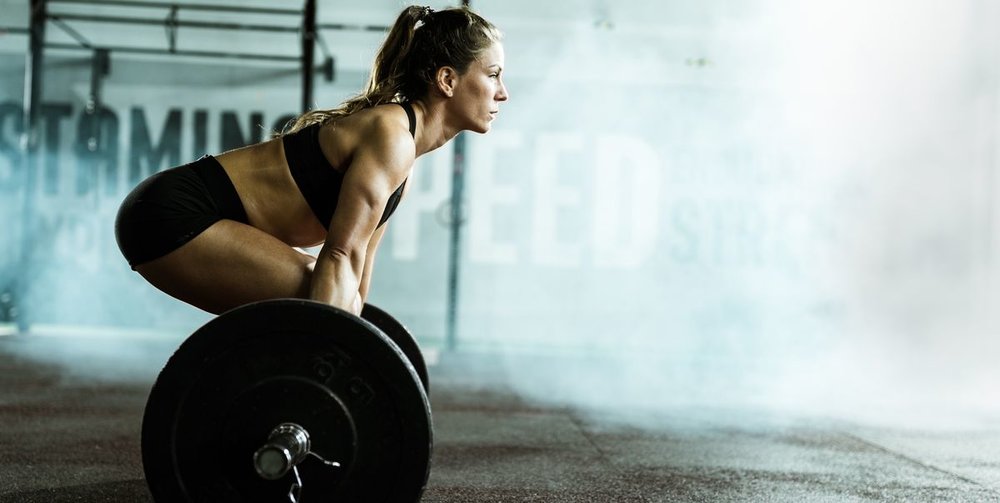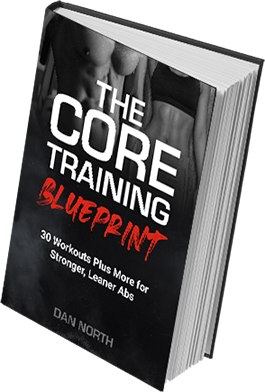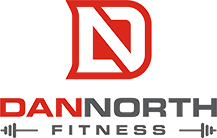We should probably get this out of the way first: your weight on the scale, for the most part, doesn’t mean shit. Sometimes people who think they’re overweight aren’t necessarily “heavier” than they should be, their bodies are just storing more fat than is optimal.
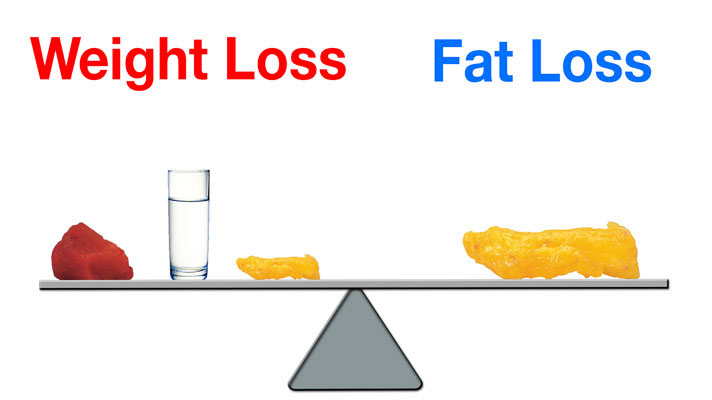
Your bodyweight is the total weight of everything in your body (bones, muscle, fat, organs, poop). Your body fat is the amount of fat in your body.
So when you say you want to lose weight, maybe what you should be saying is you want to lose fat. However, weight loss can be an effective measurement tool and in some extreme cases, is actually necessary.
When we exercise, we break our muscles down and they rebuild so we become stronger. So a lot of times people will start an exercise program and even though they are clearly getting leaner, feeling better, and their clothes are fitting differently…the weight on the scale hasn’t really changed.
Well, guess what…muscle weighs more than fat! Muscle is denser than fat so it weighs more and takes up less space. So it makes sense that your weight hasn’t dropped. Which is fine!
There are some great indicators that will let you know if you’re on the right path when working out:
- You feel better
- You sleep better
- Your clothes fit differently
- You have more energy
- Sex is better
- People are noticing
All of these indicators tower far and beyond in importance over what a number on the scale represents. But, I get it…we’re all human and sometimes people are just obsessed with numbers. If that’s the case, tracking your body fat percentage and/or body measurements are great tools to measure progress.
If you’re still looking at the number on the scale, here’s what I suggest:
- Don’t get frustrated if it takes time or doesn’t change at all. Your bodyweight, for the most part, isn’t a fair representation of how hard you’re working in the gym. Please read the six indicators I listed above one more time if you need to.
- Don’t weigh yourself every other hour. If you’re hopping on the scale after every meal, stop. Give your body time to adjust, it needs it. Plus, who the hell wants to be stressed and worried about a fucking number?
- Weigh yourself in the morning, after you use the bathroom and before breakfast, with the same scale. This will keep things consistent.
- Don’t stress it, it’s seriously not worth it.
So when we’re talking about lifting weights to help you lose weight, it can, but it doesn’t always. Remember, muscle is denser than fat so you might be adding muscle and losing fat, but seeing the same number on the scale.
What lifting weights does to your body is:
- Get you stronger
- Add lean muscle
- Raise your metabolic system
So even though you won’t always necessarily lose weight, you will most certainly lose fat when you lift weights and eat well.
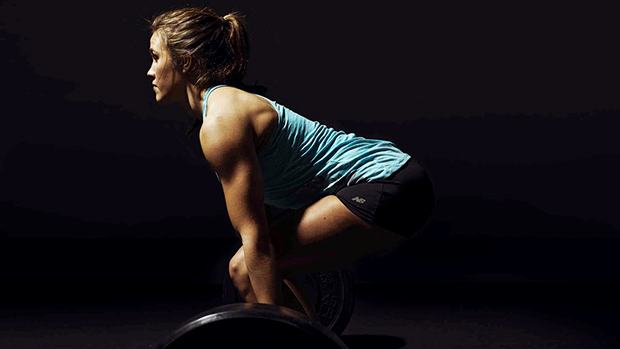
What you’re doing when you lift weights and perform strength training is you’re building a bigger engine. You’re creating a body that burns more calories at a resting state.
One of the biggest mistakes people make when they try to lose weight is cramming as much as they can into their workouts in hopes of burning a high number of calories. They’re obsessed with how hard they’re working in the gym, but don’t pay any attention to what their bodies are doing outside of the gym.
What you should understand is your body doesn’t stop working after you leave the gym doors. You are constantly burning calories, whether you know it or not. When you sleep, walk to get your morning coffee, sit at work…our bodies are constantly using up energy to perform everyday tasks. So if your goal is to lose weight or drop your body fat percentage, wouldn’t you want to be burning more calories outside of the gym as well?
That’s where strength training comes in.
The stronger you are, the more lean mass you have. The more lean muscle you have, the higher your metabolic rate becomes. Your BMR (basal metabolic rate) is how many calories you’re expending at a resting state. This number increases drastically from getting stronger and having more muscle.
Cardio burns fat during your workouts, but it doesn’t necessarily do a great job of increasing your metabolic rate to burn calories after you’ve left the gym. Plus, if you only do cardio, you don’t get stronger. But, a stronger body has better aerobic capacity. So there is a direct correlation between how strong someone is and how good their cardio ability is.
Stronger = Increased BMR = Increased Aerobic Capacity = Fat Loss
I had a client come in to train with me and he was obsessed with knowing exactly how many calories he was burning in his workouts. If he burned anything less than 1,000 he thought he failed. He had been following a lot of circuit and HIIT routines before seeing me and wanted some help with weight training. He had never followed a strength program before, and was eager to get stronger.
So to put this into perspective for you, this client had gone from doing a shit ton of circuit training to following a strength program (something similar to a 5×5). He was always moving during his circuit workouts, jumping from exercise to exercise with little to no rest.
So when it came time to lift heavy weight, where rest is required, he was a little skeptical. In his head, if he wasn’t moving, he wasn’t working. The problem with thinking like that is that if constant work and movement are your priority, you will never be able to fully exert as much force as you potentially could. If you are always moving and throwing a bunch of exercises together all the time, you’ll never have enough energy reserves to truly go all out.
So we get deeper into his program and he notices something, he’s starting to have more energy and sleep better. Two great signs after starting a strength program. He’s also noticing that not only is he getting stronger, he’s actually burning just as much, if not more calories during his workouts by lifting heavy weights.
Think about what lifting heavy does to your body. When you lift weights, your body is forced to turn on a maximal amount of muscle fibers to fight against that resistance. Overtime, your body learns how to engage these ‘newly discovered’ muscles, which translates to:
- strength development
- muscle gain
- improved aerobic capacity (better cardio)
- higher metabolic rate (more muscle = more energy)
Anaerobic training improves your aerobic conditioning, but not the other way around. While getting stronger is proven to improve your body’s ability to utilize oxygen, doing a bunch of cardio will not increase your body’s overall strength.
How often should you lift weights if you want to lose fat?
Obviously, the answer to this is going to be different for each individual case. I would say a healthy number for the majority of the population looking to lose fat would be at least two to three strength training sessions per week with some cardio on the days you’re not lifting. There are tons of ways you can divide up your workouts and organize your routine, such as the following:
MONDAY: UPPER BODY/WEDNESDAY: LOWER BODY/FRIDAY: FULL BODY
OR
MONDAY: PUSH/WEDNESDAY: PULL/FRIDAY: LEGS
OR
MONDAY: SQUAT/WEDNESDAY: BENCH/FRIDAY: DEADLIFT
Those are just a few of many basic splits you can follow. The idea is to find a routine that is sustainable and realistic. You will find the most success following a program that you can manage, not overshooting and saying you’re going to train 6-7 times per week and end up fucking off half way through the first few workouts. Follow something you can realistically maintain for at least a few months before switching things up so you can actually see the benefit of the program.
How heavy should I go?
If you’ve been lifting weights for at least a couple of years, you can test your 1RM to find out what your working percentages should be. Testing your one rep max is something that cannot be taken lightly. Check this Instagram post’s caption to give you a better idea on how to warm up to your true one rep max here.
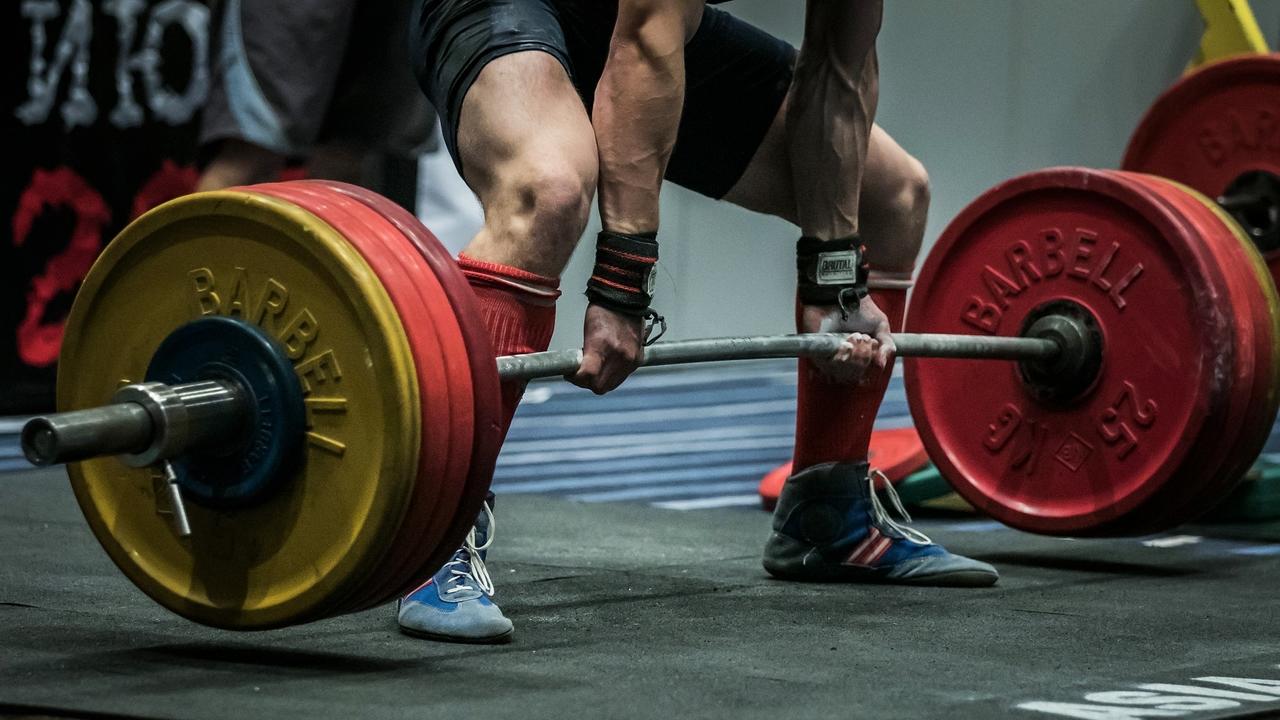
If you want to find out your one rep max but don’t think you’re ready to actually test it, you can use a 1RM calculator (just Google it and you will find one).
If you’re new to lifting weights, you do not need to test your 1RM and I would actually suggest against it for now. There’s no need to put yourself at that level of risk without first establishing a solid base. Instead, focus on lifting weights that make you work to complete the set, but not to the point where your form breaks down and you’re putting yourself at risk of injury.
Every. Single. Rep. Counts. And every rep should look exactly the same, so you can instil proper form and movement patterns into your brain. That’s what’s going to get you stronger and ultimately help you build an engine to burn fat.
How many reps should I do?
You want to accumulate volume in order to build strength and build your fat burning engine. Volume is the total amount of weight lifted in a single workout. Example: 135lbs deadlift for 5 sets of 5 reps is 3,375lbs (135lbs x 5 x 5 = 3,375lbs). The more volume you accumulate, the stronger you become and the harder your metabolic system operates and burns calories, which will ultimately lead to fat loss.
For secondary exercises (smaller movements like triceps extensions and other isolation exercises), the rep range can be anywhere from 8-20 reps. The lower the reps, the heavier the weight. The higher the reps, the lower the weight. Both are great. Both are necessary and have their time and place. Both will help you build muscle and burn fat.
Should I do cardio before or after I lift weights?
Probably neither. That’s not to say you shouldn’t be doing any cardio, I would just recommend doing it on the days you’re not lifting. A couple of reasons why:
- You want to be fresh and have as much energy as possible so your body is ready to handle the weights. If you do cardio before you lift weights, your energy systems have already started depleting to the point where you won’t be getting as much out of the workout as you potentially could be.
- You need to allow your body to recover from weight training if you want to see the benefit of it. After you lift weights, your body is craving nourishment and recovery to help your muscles rebuild and doing cardio immediately after is going to stop that from happening.
When and what kind of cardio should I be doing?
If your goal is fat loss, doing cardio in addition to your strength training is a good idea. The question is, what kind of cardio should you be doing and how often?
FOR A FULL BREAKDOWN ON THIS TOPIC, SEE MY ARTICLE HERE:
How many calories should I be eating if I want to get stronger but lose fat at the same time?
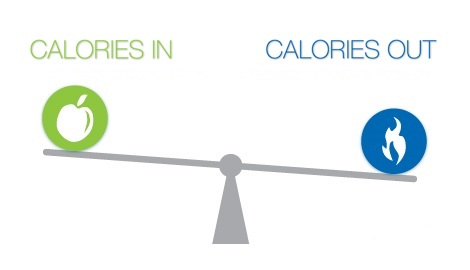
First of all, if you want to want to build muscle, you need to be in a caloric surplus. That means you are consuming more calories than you are burning. If your goal is fat loss, then your body needs to be burning more calories than you’re consuming. You can get stronger while in a caloric deficit, but you won’t be packing on muscle. What you’re going to do in this case is make the muscles you currently have as strong and efficient at handling resistance as possible. The more weight your body can handle, the more muscle fiber activation occurs which helps you engage more muscles when performing cardio and other forms of exercise.
Secondly, what do you mean by ‘the same time’? Do you mean within the same workout, the same week, the same month? If in a year from now…you were stronger, leaner, and healthier, would that be ok with you? Remember to approach this as a process and don’t get wound up on making immediate drastic change because that’s only going to demotivate you.
What should I be eating before and after my workouts?
In a nutshell, you want to fuel your body with protein and carbs roughly within about a 90 min window before and after training. Minimize or eliminate your fat intake around your workouts since they slow down your digestive system. You want foods that your body can use quickly and efficiently for energy and recovery.
Precision Nutrition has a great article on how to eat before and after your workouts you can read here:
Key points
- Bodyweight is the total weight of everything in your body.
- Body fat is the amount of fat stored in your body.
- Lifting weights and getting stronger increases your basal metabolic rate (BMR).
- A higher BMR causes your body to burn more calories throughout the day at a resting state.
- Strength training will improve your cardio.
- Cardio does not get you stronger.
- For most people, strength training 2-3 times per week (45-60 min each) with 2-3 cardio workouts per week (20-30 min each) is more than enough for fat loss.
- You can get stronger and lose fat by eating within a caloric surplus.
- Consume carbs and protein within roughly 90 min before and after workouts for energy and recovery.
If you have any questions or comments about this article, I would love to hear it! Shoot me a message down below!
Thanks for reading!
Dan


